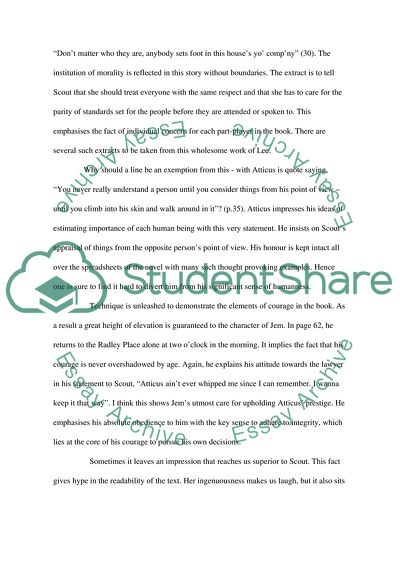Cite this document
(Harper Lee's Vision and Depiction of Courage in To Kill a Mockingbird Book Report/Review, n.d.)
Harper Lee's Vision and Depiction of Courage in To Kill a Mockingbird Book Report/Review. Retrieved from https://studentshare.org/literature/1735938-what-has-harper-lee-got-to-say-about-courage-and-what-methods-does-she-use-to-present-these-themes
Harper Lee's Vision and Depiction of Courage in To Kill a Mockingbird Book Report/Review. Retrieved from https://studentshare.org/literature/1735938-what-has-harper-lee-got-to-say-about-courage-and-what-methods-does-she-use-to-present-these-themes
(Harper Lee'S Vision and Depiction of Courage in To Kill a Mockingbird Book Report/Review)
Harper Lee'S Vision and Depiction of Courage in To Kill a Mockingbird Book Report/Review. https://studentshare.org/literature/1735938-what-has-harper-lee-got-to-say-about-courage-and-what-methods-does-she-use-to-present-these-themes.
Harper Lee'S Vision and Depiction of Courage in To Kill a Mockingbird Book Report/Review. https://studentshare.org/literature/1735938-what-has-harper-lee-got-to-say-about-courage-and-what-methods-does-she-use-to-present-these-themes.
“Harper Lee'S Vision and Depiction of Courage in To Kill a Mockingbird Book Report/Review”. https://studentshare.org/literature/1735938-what-has-harper-lee-got-to-say-about-courage-and-what-methods-does-she-use-to-present-these-themes.


